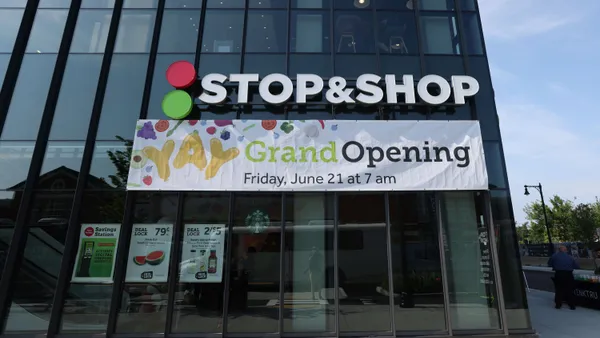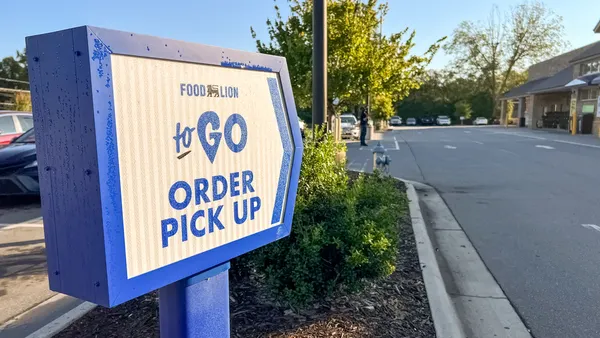Dive Brief:
- Aldi announced a major expansion in its partnership with Instacart from a mere four cities originally to 35 states, according to a press release. The world's fifth largest retailer said Tuesday that its rollout will go live by Thanksgiving and cover 5,000 zip codes, including 75 major markets like New York City, Raleigh, San Diego and Minneapolis.
- The German grocer piloted its Instacart partnership last year in Atlanta, Chicago, Dallas and Los Angeles. In March, Aldi expanded its same-day delivery to Chicagoland, northwest Indiana, and Rockford, Illinois.
- In addition to the expansion, Aldi plans to air a new ad campaign on Sept. 17, according to Supermarket News. The campaign will be a series of commercials focused on Aldi's wide selection of high-quality products at a value price.
Dive Insight:
Aldi is making a push to compete with big players like Walmart and Kroger on the national stage as it steps up its e-commerce game and plans the launch of a new ad campaign.
The expansion with Instacart is a big step for Aldi, who now joins Albertsons and Kroger as one of Instacart's biggest partners. Until now, the retailer only offered online delivery in just a few markets. Combined with recent news that Aldi piloted curbside pickup to all of its U.S. stores, it appears the discount grocer is beginning to prioritize online shopping more than it had previously.
Aldi may have to play a little catch up, as its competitors also continue to roll out new and convenient services for their customers. Amazon, for example, announced in August its 30-minute grocery pickup at Whole Foods, while Walmart plans to add grocery delivery at 800 of its stores by the end of 2018. Kroger will add ClickList curbside pickup at 500 locations this year adding to its 900 stores that offer grocery delivery. In addition, retailers like Costco and Hy-Vee also recently expanded partnerships with Instacart.
As grocery delivery and online shopping become standard services by supermarkets, Aldi's decision to offer delivery nationwide was inevitable. Grocers that don’t keep up with these services risk losing customers to those that do. With e-commerce sales expected to reach $100 billion by 2022, retailers can’t afford to lose any of that market share. That being said, although its partnership with Instacart puts it head-to-head with the bigger grocers, only 2% of grocery sales currently come from online.
The move, however, is still important as Aldi looks to compete with larger retailers like Kroger and Walmart all while attempting to drive out its European competitor Lidl. In August, the retailer announced its $5.3 billion plan to be the third largest grocer by store count in 2022. The grocer's goal is to reach as many consumers as possible and Instacart can help it do that.
In addition to its e-commerce focus, the discount grocer has been hard at work trying to change its image from old and outdated to a go-to shopping destination for consumers with premium products — a headache for both bigger retailers and specialty grocers. The grocer expanded its produce offerings and announced plans to increase product assortment by 20%. Last year, the chain also announced that it will spend $3 billion in the next five years to add 900 new stores and $2 billion to remodel current ones.
Its new ad campaign will also play a key role in shifting the grocer's public image. The commercials will highlight its private label products, showing consumers that although discounted, its items are up to par with those from Trader Joe’s or Whole Foods 365. The campaign though is an expensive gamble since video ad campaigns don’t typically have a big payoff for grocers and cuts into its relatively small advertising budget.
The retailer's expansion of grocery delivery along with its attempts at changing its image could help the company keep hold of loyal Aldi customers as well as draw in new ones. The grocer should note, however, that its product offerings and marketing techniques shouldn't replicate its European roots considering the U.S. market differs greatly.













